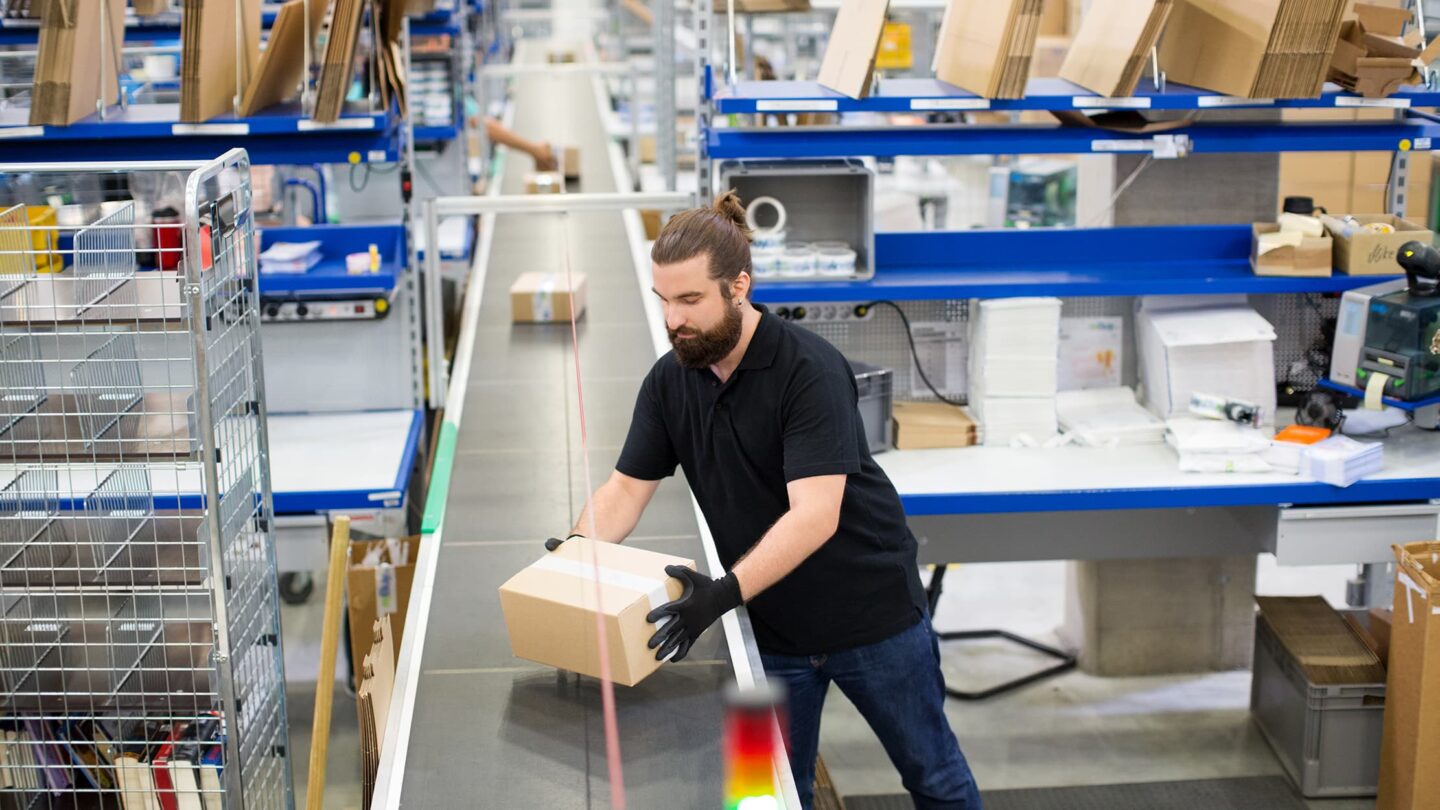Strategy, Legal & Operations
How manufacturers can become more environmentally sustainable
Learn how manufacturers can be more sustainable, resulting in reduced costs and optimised operations, and a positive impact on the planet.

Despite a time of soaring costs, inflation and energy bills, many UK manufacturers have another key challenge to focus on: being truly sustainable.
Discover how you can embed sustainability into your firm’s working practices in a way that will help you not just survive challenging times but thrive into the future.
Here’s what we cover in this article:
- Why is sustainability important for manufacturers?
- How manufacturers can incorporate greener practices
- Top tips from manufacturers on sustainability
- Final thoughts on manufacturers being environmentally sustainable
Why is sustainability important for manufacturers?
The UK manufacturing sector is an economic powerhouse – employing 2.5 million people, and with an annual output of £183bn, according to Make UK.
But it’s no secret that times are hard.
With multiple pressures such as rising supply chain costs, coupled with the need to comply to initiatives such as Net Zero by 2050, being sustainable is no longer a choice or a nice to have.
Manufacturers that embrace sustainability won’t just survive, they’ll thrive in three key areas:
- Cutting carbon and costs: Creating a truly green supply chain involves removing waste and inefficiencies across the board. You’ll just need to prioritise measures that add up financially for your firm.
- New business: With a sustainability mindset, you can explore new business opportunities in emerging lower carbon technologies, innovations and materials.
- Branding badge of honour: A true commitment to sustainability is something you should quite rightly shout about in front of industry peers, influencers and customers – who may favour you on green credentials.
How manufacturers can incorporate greener practices
At the start of your sustainability journey, the last thing you want is to be accused of greenwashing – stating that you’re more sustainably responsible than you are.
With that in mind, it’s best to approach sustainability in a strategic and methodical way.
That means balancing cost and capital, quality and service, and then redesigning your supply chain.
Step 1: Develop a strategy
Start by making a plan.
Engage key people across your organisation, such as the C-suite, executives, and department heads of key functions such as finance, HR, procurement and marketing.
Together, work on a high-level approach – with this buy-in and support, you’ll get far more traction and impact from your activities.
Step 2: Get to grips with your operations and supply chain
Manufacturers can use a ready-made framework to scrutinise their supply chains and identify areas of waste.
The LEAN framework, credited to Toyota, allows businesses to methodically identify and remove several hidden types of waste – including time, energy and money.
Why not work through the same areas in your manufacturing business?:
- Defects: Look at how much time, energy and money you’re wasting on products or services that ultimately don’t meet your standards. Include the design and correction of any packaging you need. At the end, maybe you’ll change your packaging to use materials that are kinder to the environment or more robust to minimise energy the impact of production.
- Overproduction: Are you creating more product than you can actually sell? That might mean you’re also wasting further time through unnecessary energy use, approvals and quality checks. When you take a bird’s eye view of the entire production cycle, you might identify improvements across the board to reduce both your costs and carbon footprint.
- Waiting: You might find that delays have a knock-on effect on subsequent steps in your processes – slowing down your operations, increasing costs and reducing profits.
- Non-utilised talent: Are you failing to draw upon the experience and talents of people who can help you achieve your sustainability objectives? Get them on board.
- Transportation: Are you moving items or information from one location to another, even when it’s not necessary? Maybe you could adjust the location and configuration of key sites to minimise travel and emissions.
- Inventory: Do you have inventory or information that’s sitting idle? This is akin to storing money on your factory floor.
- Motion: Are there unnecessary movements of people, information or equipment within your firm or your supply chain? Even simple solutions can make a big difference, such as keeping tools or equipment in a dedicated place to save people wasting time searching for items.
- Extra processing: Look at whether the processes behind your people, information or equipment are over-engineered, or in some instances totally unnecessary. For example, do you generate multiple types of waste? Maybe by changing supplies you could reduce the time spent disposing of different materials.
Of course, every manufacturing business is different. Maybe there are some quick wins for you such as changing shift times to match the local bus timetable, which will reduce your teams’ dependence on car journeys.
These relatively simple changes can lead to savings of thousands of pounds per month and a big dent in your carbon footprint.
Thinking ahead
Now you’ve got a complete picture of what your current supply chain looks like, you can work out how best to maximise sustainability.
Make sure you view all potential changes in context.
For example, what are your customers willing to pay for? What’s your plan for the business over the next two, five, 10 or 15 years? How long will the market want your current offering.
And finally, what is your return on investment?
That way, you’ll base any changes on business realities and whole life costs. You’ll be able to rationalise potential investments – where perhaps the cost of investing in a solar farm, as well as maintaining the infrastructure might not actually stack up – for example, if you’re planning to retire.
Commit to continuous improvement
Creating a sustainable business and supply chain should be seen as a continuous improvement process.
Carry out regular reviews of your performance, identify improvements and update the approach one step at a time.
You may also want to see support from independent businesses, such as Social Value Portal, which specialises in using robust data to measure supply chain sustainability.
Top tips from manufacturers on sustainability
So, all this is good in theory – but we’ve gone the extra mile and spoken to manufacturers to find out how they have put sustainability into practice.
Belvoir Farm
Premium soft drinks company Belvoir Farm, which has a turnover of circa £23m, has delivered a wide range of measures to maximise sustainability and is aiming to become carbon neutral by 2030.
The firm joined the Certified Sustainable initiative, which helps manufacturers to measure, manage and reduce their environmental impact.
Almost 750 solar photovoltaic panels have been installed on the roof above the bottling hall, which generates 30% of required electricity. Long term, the business hopes to self-generate its energy.
Since 2018, the company has also reduced carbon emissions by 36%, by switching from oil to liquefied petroleum gas (LPG) and using bio green LPG fuel for forklift trucks.
Belvoir Farm has also delivered several innovations on waste – carrying out a detailed, independent audit of its entire waste management and recycling activities.
As part of this, the company installed a detailed software system to keep track of how waste products are disposed of. It’s already achieved zero waste to landfill, and used some waste streams to generate more electricity.
Other sustainability initiatives include planting 7,500 trees, returning the packaging of its glass bottles to the manufacturer to be reused for future deliveries, harvesting rainwater for irrigation, and providing electric charge points at the company’s headquarters.
Finches Friend
Finches Friend is tackling rapidly declining bird populations with its range of Cleaner Bird Feeders, which have been designed to specifically stop the unintentional transfer of deadly diseases through supplementary feeding – an issue which is associated with traditional feeders.
The company has taken several steps to reduce environmental impact.
It manufactures products in the UK – carrying out all moulding, assembly and distribution activities within a 12-mile radius. Each feeder is designed to last at least five years, and is made using polycarbonate, which can be melted and reused.
In addition, Finches Friend recycles all component packaging, between manufacturing and assembly.
It means that its products last around three times longer and have a lower carbon footprint than mass-produced models traditionally found in garden centres.
Co-founder Dick Woods says: “Sustainability is everything to us as a manufacturer. Our focus is on sustaining and assisting the recovery of our wild birds and protecting the environment, ensuring a future for our children and grandchildren.”
Final thoughts on manufacturers being environmentally sustainable
If you can combine developing ultra-efficient processes and products, a robust and resilient supply chain and lessons learned from other manufacturers, you’ll be better placed to ensure that your manufacturing firm can run in an environmentally sustainable manner, while also realising maximum value.






Ask the author a question or share your advice